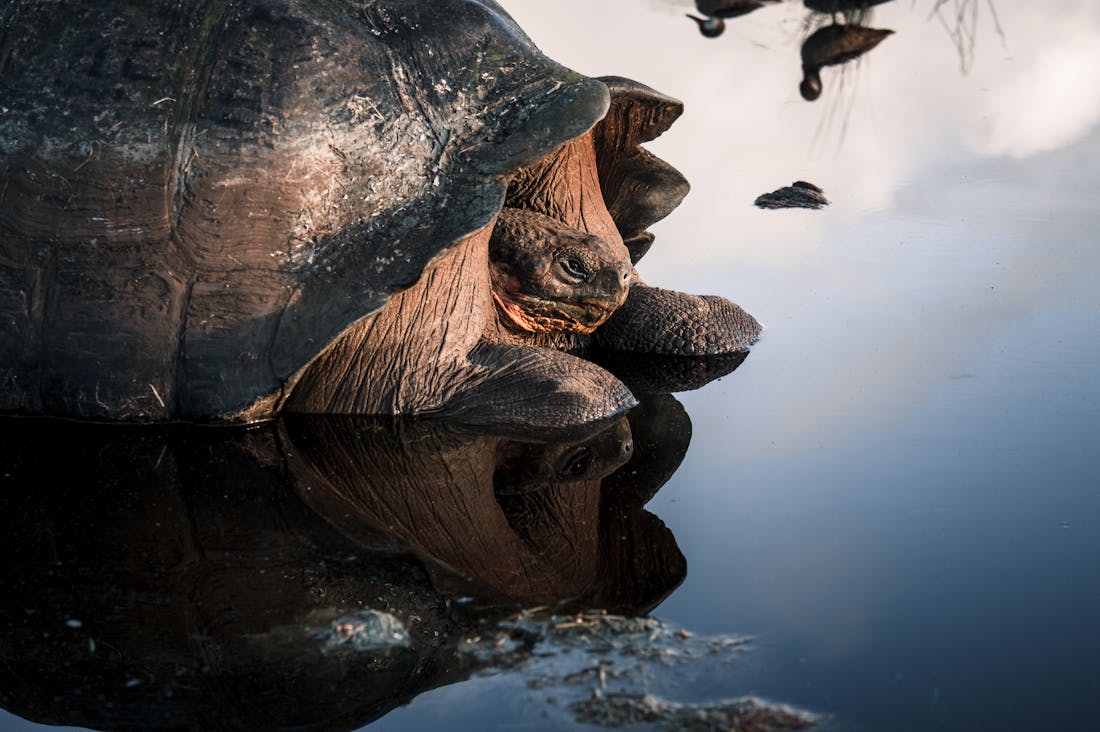In an era where the pace of life accelerates daily, finding tranquility and connection with oneself through travel becomes essential. "The Essential Guide to Mindful Travel: Discovering Serenity in Our Fast-Paced World" offers a pathway to intentional exploration, inviting readers to slow down, engage with their surroundings, and rediscover the joy of mindful wandering. This guide combines practical tips with profound insights, helping travelers cultivate presence and appreciation while navigating diverse landscapes. Embrace the journey within as you embark on adventures that nourish both the soul and the spirit, fostering a deeper understanding of the world and your place within it.

Finding Peace in New Places
Finding peace in new places often requires an open heart and a willingness to embrace the unfamiliar. When we step outside our comfort zones, we encounter diverse landscapes, cultures, and experiences that can profoundly shift our perspectives. Whether it’s the tranquility of a secluded beach, the vibrant energy of a bustling city, or the serene embrace of a mountain retreat, each location offers its own unique charm. These new environments invite us to disconnect from our routine stresses and reconnect with ourselves. By immersing ourselves in the beauty and rhythm of these places, we create opportunities for mindfulness, reflection, and ultimately, a deeper sense of inner calm. As we explore the world around us, we also discover a little more about who we are and what brings us true joy.

The Benefits of Slow Travel
Slow travel embraces a more intentional and immersive approach to exploring new destinations, offering numerous benefits that enhance the travel experience. By prioritizing quality over quantity, travelers can truly connect with local cultures, traditions, and communities. This method encourages deeper interactions with residents, leading to authentic experiences that often elude hurried tourists. Additionally, slow travel often promotes sustainability, as it supports local economies and reduces environmental impact by minimizing transportation needs. It allows individuals to savor each moment, fostering mindfulness and appreciation for the journey rather than just the destination. Ultimately, slow travel cultivates a richer, more meaningful understanding of the world.

Creating a Mindful Travel Routine
Creating a mindful travel routine can transform your journey from a simple sightseeing trip into a profound experience of connection and self-discovery. Begin by setting intentions before you leave; think about what you hope to gain from your travels. During your trip, incorporate regular moments of mindfulness—practice deep breathing while watching a sunrise, or take a quiet walk to absorb your surroundings fully. Consider journaling daily to reflect on your experiences, or engage in local practices like meditation or yoga that resonate with the culture you’re exploring. By embracing the present moment and savoring new experiences, you cultivate a deeper appreciation for both the world around you and your own inner self.
Embracing Local Culture through Mindful Engagement
Engaging with the local culture is a cornerstone of mindful travel, offering rich experiences that deepen your connection to the places you visit. To fully immerse yourself, consider participating in community events, workshops, or local festivals. These experiences foster a sense of belonging and allow for unique interactions with residents. By learning traditional crafts, cooking local dishes, or even volunteering, you gain insights that are often missed by tourists. This active involvement not only enriches your journey but also supports the preservation of cultural heritage, creating a symbiotic relationship between travelers and the communities they explore.
The Power of Nature in Mindful Travel
Nature has a unique ability to ground us and inspire mindfulness, making it a powerful element in our travels. Whether you find yourself hiking through lush forests, strolling along scenic coastlines, or meditating in a tranquil garden, immersing yourself in nature can enhance your sense of peace and presence. The sights, sounds, and scents of the natural world can evoke profound feelings of connection and gratitude. As you engage with these environments, remember to practice conscious breathing and observation, allowing yourself to fully experience the moment. This connection with nature not only rejuvenates your spirit but also encourages a deeper appreciation for the planet's beauty.
Traveling with Intention: Setting Goals for Your Journey
Before embarking on your travels, it’s beneficial to set clear intentions that guide your journey. Reflect on what you wish to achieve through your experiences, whether it's personal growth, a deeper understanding of a culture, or simply the joy of exploration. Documenting these goals can serve as a reminder throughout your trip and helps you stay focused on what truly matters. Additionally, consider how you can contribute positively to the places you visit. This might involve reducing your environmental footprint, supporting local artisans, or participating in environmental conservation efforts. By aligning your actions with your intentions, you enrich your travel experience and foster a sense of purpose.
Mindful Travel Practices for Lasting Impact
Incorporating mindful practices into your travels can create lasting impacts, both personally and for the communities you visit. Consider adopting habits such as daily gratitude reflections, where you take time each evening to acknowledge the beauty and lessons of your day. Additionally, practicing slow eating while enjoying local cuisine allows you to appreciate flavors and textures fully. Engaging in conversations with locals about their lives and perspectives fosters understanding and connection. Upon returning home, carry these practices with you to maintain a mindful lifestyle. Share your experiences and insights with others, inspiring them to explore the world with intention and awareness, creating a ripple effect of mindful travel.
AI-Assisted Content Disclaimer
This article was created with AI assistance and reviewed by a human for accuracy and clarity.